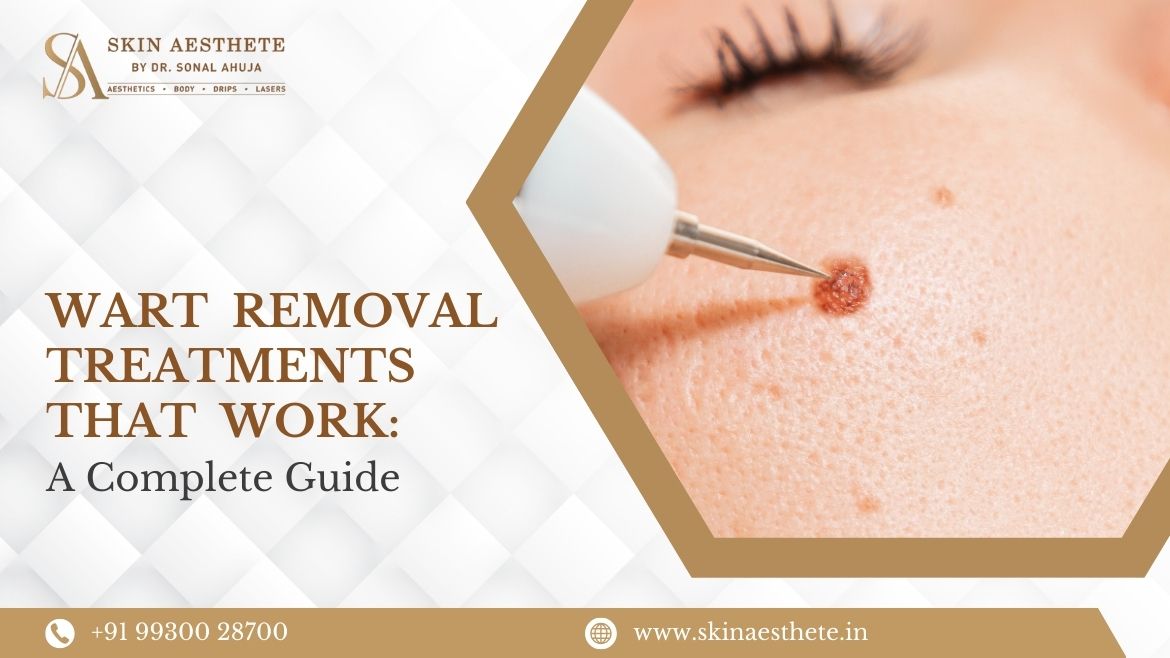




Warts are small, rough growths on the skin caused by the Human Papilloma Virus (HPV). Although they are generally harmless and may eventually disappear on their own, many people opt to remove them due to cosmetic concerns or to prevent them from spreading. There are several treatments available for wart removal, ranging from home remedies to professional medical options. In this guide, we’ll explore some of the most effective wart removal treatments and when to consult a doctor.
While many warts will eventually go away on their own, treatment can speed up the process or remove warts that are bothersome, spreading, or unsightly. There are various treatment options, each with its own advantages depending on the type, location, and severity of the wart. Below are some of the most commonly used treatments:
One of the most widely used methods for treating warts is salicylic acid, which works by gradually removing layers of the wart. This treatment is often effective, especially when used in conjunction with other treatments such as cryotherapy (freezing). It may take several weeks for the wart to disappear.
Cryotherapy involves applying liquid nitrogen to the wart to freeze the tissue. This process creates a blister beneath and around the wart, killing the affected tissue. Cryotherapy is typically performed in a healthcare setting, and you may need multiple sessions for it to be effective.
This prescription-strength medication is applied directly to the wart and covered with a bandage for up to 12 weeks. It works by targeting the wart tissue and encouraging its removal. It’s often used for treating warts in children and has been shown to be effective for some people.
Candida antigen is injected into the wart to stimulate the immune system to fight the virus that causes warts. This treatment is effective for people who haven’t responded to other methods. Although it’s not FDA-approved for wart removal, it can be a helpful off-label treatment for persistent warts.
If other treatments don’t work, laser therapy may be an option. This method uses a focused laser to burn the blood vessels inside the wart, causing it to die and fall off. While laser treatments can be effective, they are typically used as a last resort, and there’s limited evidence on how well they work in the long term. Carbon dioxide lasers, in particular, can cause pain and scarring, so this option is not ideal for everyone.
When salicylic acid is ineffective, a healthcare professional might recommend using stronger acids, such as trichloroacetic acid. These acids are applied after the wart is shaved down, and the treatment may need to be repeated weekly for the wart to disappear. Side effects can include stinging, burning, and skin discoloration.
In this procedure, a specialized tool called a curette is used to scrape off the wart. Curettage may be combined with other treatments, like freezing or acid applications, for enhanced results. Although this treatment can be effective, there’s a possibility that the wart could return to the same area.
Imiquimod is a cream that stimulates the immune system to fight the virus causing the wart. It is typically used for warts that are difficult to treat or located in hard-to-reach areas, such as the genital region. This option may take several weeks to show results.
Disclaimer: Visiting a dermatologist before opting for any treatment options is always recommended.
Although warts are typically harmless, they can be bothersome or unsightly, and removal might be the best option. There are various treatments available—from simple home remedies to advanced medical procedures—that can effectively get rid of warts. Whether you choose salicylic acid, cryotherapy, or a more advanced treatment like laser therapy, there’s a solution to fit your needs. Always consult a dermatologist for the best course of action. If you are looking for the best dermatologists in Belapur Navi Mumbai, look no further than Skin Aesthete.